The Pine tree flowers is often overlooked for its beauty, this tree is actually one of the older varieties of trees in the world and has an interesting history as well as innate beauty.
However the term ‘pine tree’ is fairly problematic among botanists and horticulturalists. It’s most likely referring to the family of genera known as Pinaceae however this is one of the largest tree families including around 200 species that are also spruces, firs, cedars, hemlocks, and larches.
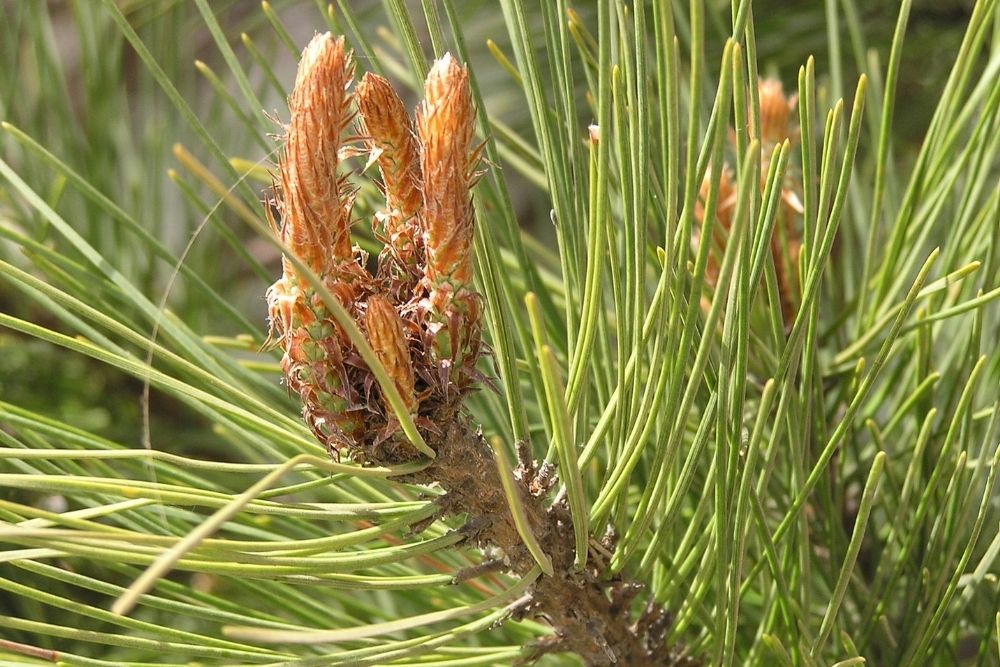
A common misnomer is the Christmas tree being referred to as a ‘pine tree’ when it is in fact a fir or spruce, technically.
A true ‘pine tree’ would have to be explicitly from the Pinus genus, although certain gardeners and landscapers will disagree, suggesting pine tree refers to the whole family.
Yet, many don’t understand the variation there is within the Pinus genus, so for the sake of this article, we will look exclusively at the genus Pinus and explore the gardening potential and variety within this genus together!
In general, the pinus is a very slow-growing tree, that when young can remain a shrub for any sort of usage, whereas after around 10 years the pinus will reach a decent level of maturity and can reach different heights and spread depending on the variety.
1. Pinus Wallichiana ‘Zebrina’
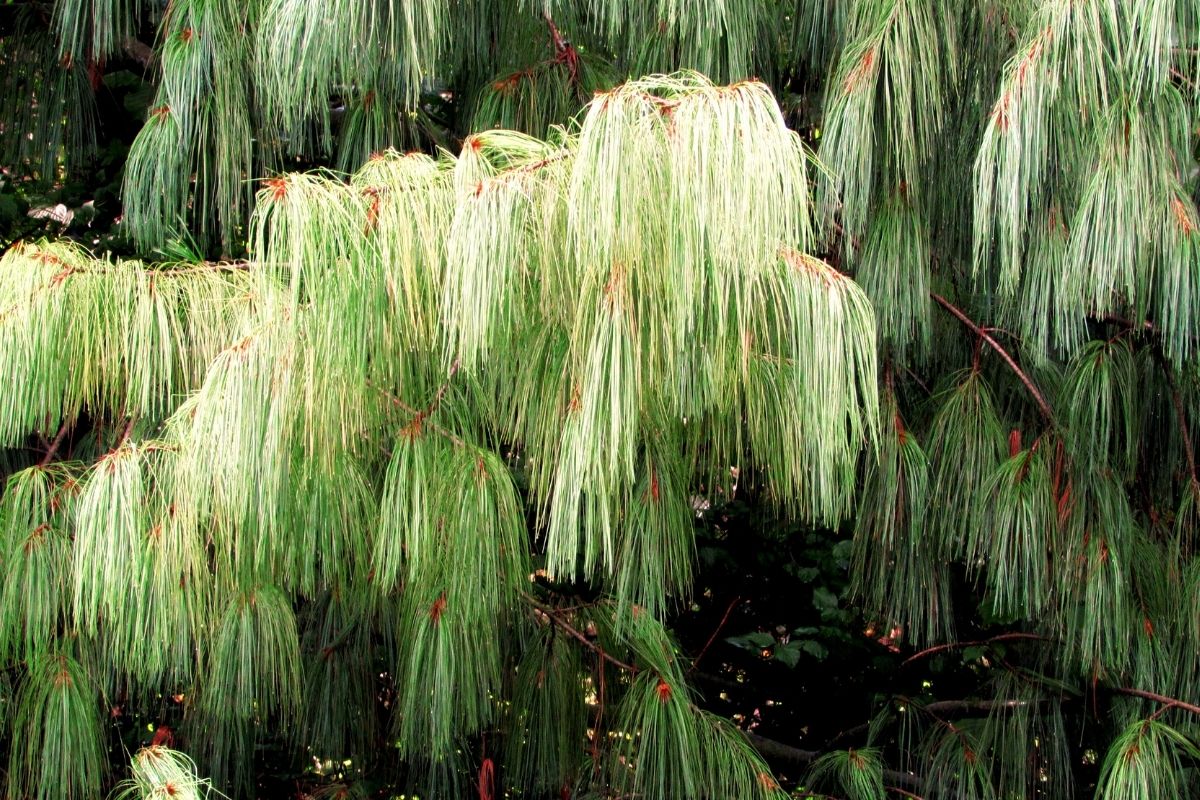
This is potentially the most popular cultivar within the subspecies of wallichiana. Wallichianas often have long needles and are delightful as small shrubs when they are young, but after around 10 years of growth, they can reach a height of 10 – 15 feet.
Surprisingly, as the plant is originally based in the Himalayan mountains, acclimatization has led this not to enjoy strong winds or excessive cold. This makes it perfect to grow in most North American states, simply find fertile soil that isn’t too close to the water and has some decent sun exposure.
This particular cultivar has variegated needles which give them a curious yellow and green vibe that is actually quite interesting and cool, in comparison to your common wallichiana. The needles are often long and form clusters as the tree grows broad but tall.
2. Pinus Sylverstris ‘Scots pine’

This is what is called an ‘old world’ pine, this makes reference to how long the cultivar has been recognized among botanists and horticulturalists – as far back as 1753 by the king of botanical nomenclature Carl Linneaus.
As the plant was discovered in Scotland at the time, it was given the name ‘Scots pine’ not to be confused with ‘Scotch pine’ which is a common misnomer., but in modern horticulture, the tree has a range from Spain to Estonia now.
The pine is recognized globally for its lovely needles that make up long branches of grey and blue needles that make a truly enchanting sight, especially in winter when they are covered in pure white snow – truly a sight to behold.
The tree is particularly tall and slow-growing, potentially reaching a height of 110 feet. In Estonia, you can find examples of the Scots pine that are 220 years old and have reached heights of 150 feet, which certainly means if you plant one today people will enjoy it for years to come.
3. Pinus Jeffreyi ‘Joppi’

Pinus jeffreyi is another pine tree that has been recognized for a long time thanks to the trees being so slow-growing and long-standing. The variety was discovered back in 1853 and named after a Scottish gardener of the name, you guessed it, John Jeffery.
However, this particular cultivar has won awards for its merit as late as 1990 and 1991, so its long-standing in people’s memories too.
While conifers and pines grow all over California not many have been cultivated specifically for their variety, this is the only exception. So if you are looking for a Pinus jeffreyi you can trust to grow well, this is worth looking into for the US cone-heads among us.
In any case, this pinus cultivar is very broad and well spread when in an infantile stage of growth. As the strong bark trunk grows as the tree matures the compact shrub will become a tall and well-spread tree that does become much broader than you would commonly imagine.
4. Pinus Parviflora ‘Fukuzumi’
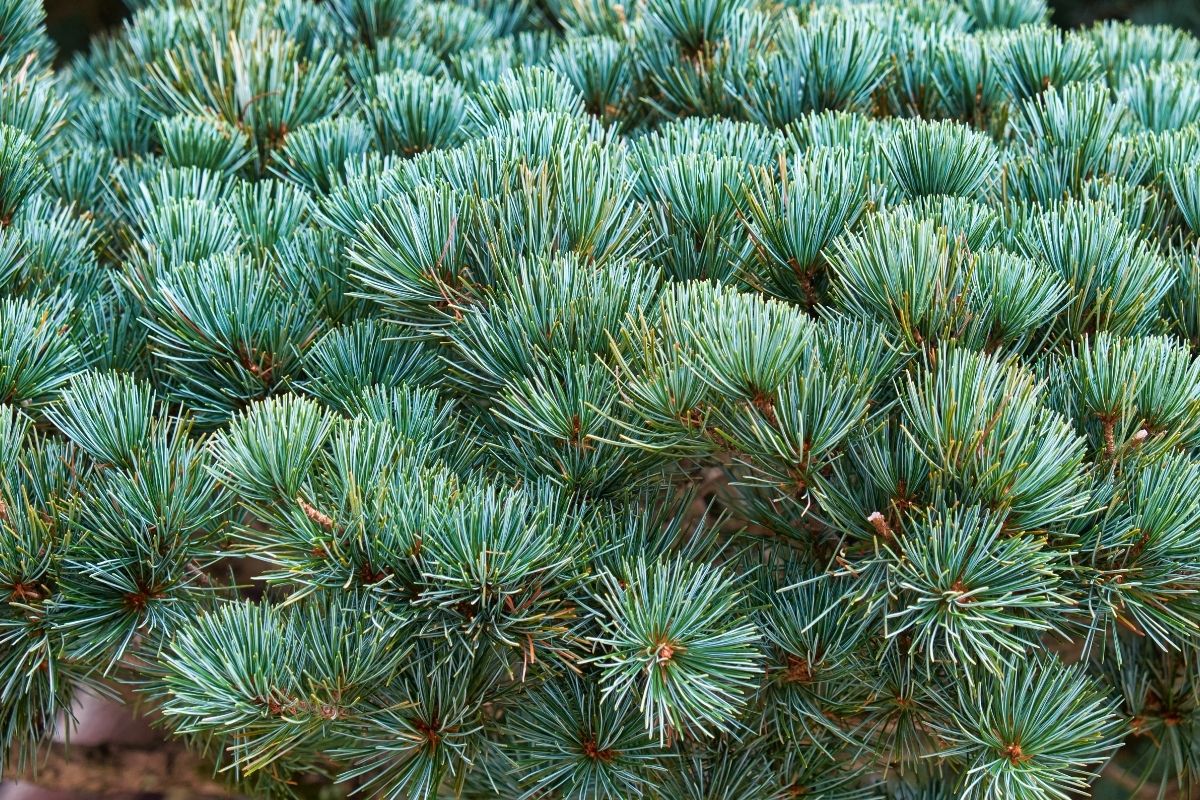
This particular cultivar originated a long time ago in Japan and is considered one of the old world Pinus even though the actual facts surrounding the plant’s origins are sparse. It was considered to have been brought into the UK around 1970 but has been used in Japanese bonsai culture for centuries.
The plant is particularly enjoyed for its unpredictability. It can often grow quite variably in size but often remains a very attractive tree. As a dwarf variety, it only grows to around 5 feet after 10 years but its long twisting blue needles make it remain a popular choice among landscapers and horticulturists.
Their pollen cones are often of particular interest among cultivators. They perform pretty well in terms of growth as long as they are in a well-drained area that doesn’t get too hot. When pruned they can really become a specimen of your garden.
RELATED: La Nature Est Belle! 43 Different Types Of French Trees
5. Pinus Mugo ‘Winter Sun’
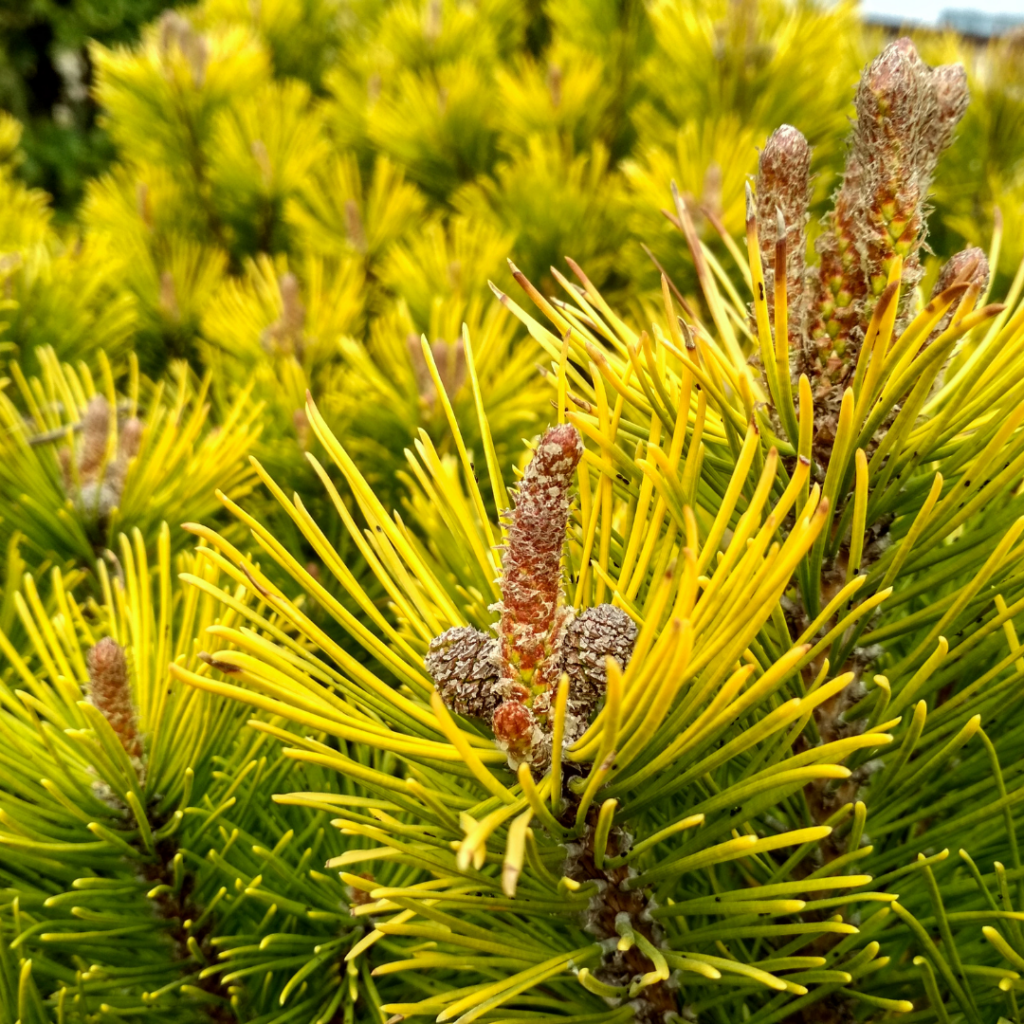
This is a particularly unique and interesting cultivar of the Pinus genus. Generally, this mugo cultivar grows quite upwards and erect for the subspecies. The pines form on the branches in strangely globular clusters that are particularly interesting.
By late fall or winter the needles become a bright yellow color, hence the name ‘Winter Sun’, or ‘Wintersonne’ in European nurseries.
Surprisingly the original seedling that led to the wider cultivation of this particular species originated in Australia, which is the only evidence you need to dispel the rumor that Pines only grow in cold climates.
When mature they can grow up to around 5 feet tall as a dwarf species of Pinus. The mature specimens are truly breathtaking and look like something from a fairytale with their bright yellow, globular needle clusters that look like beautiful poms poms which will truly bring some sun into your winter garden.
6. Pinus Densiflora ‘Low Glow’
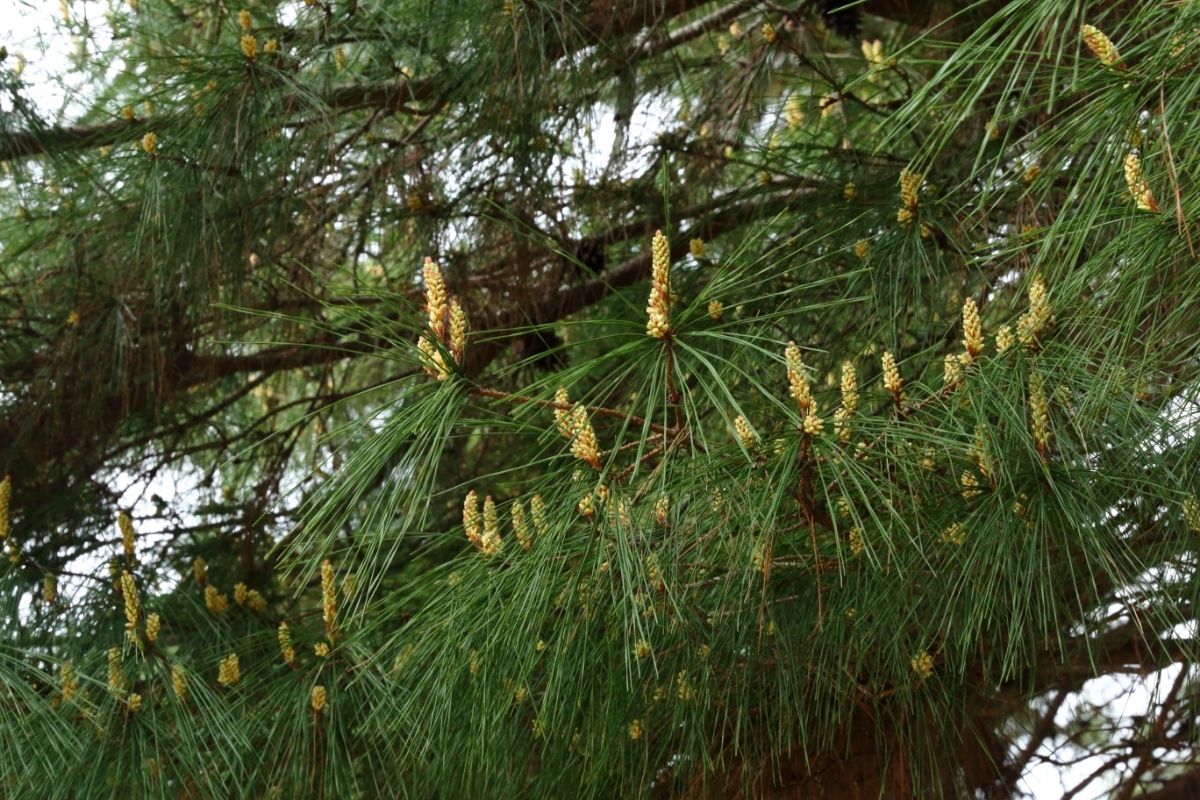
This is one to look at if you want a Pinus that doesn’t grow too high and has a great spread. This Japanese red pine has a particularly spreading growth. It can spread to around 24 inches wide when mature and can grow to around 5 feet height in maturity.
The foliage is generally wide and low spreading and when unpruned it can even cover the trunk, this makes it look particularly like a floating green cloud which is kind of cool. Specimens can be pruned to expose the red and woody bark of the trunk which is also particularly attractive.
The bright and luscious green color of the needles are really eye-catching and do indeed glow in the sunlight. It’s a fairly low-maintenance dwarf pinus if you want something to take up space but still be attractive.
7. Pinus Parviflora ‘Tenyzu Kazu’ (syn. ‘Goldylocks’)

This particular cultivar has some interesting history to do with its name, but minus this tidbit it remains a spectacular Pinus specimen. The cultivar was brought over by a botanist from Japan during the 1980s, however, he prematurely died leading to his plants being split up among his close assistants.
Around 10 years later, a separate brought back a similar cultivar that he named ‘Goldylocks’ (not Goldilocks). The assistant who inherited the ‘Tenyzu Kazu’ cultivar felt ‘Goldylocks’ was very similar and through propagation found this to be the same specimen.
However, they are commonly marketed either differently from each other, even when they are the same, or under the more marketable name ‘Goldylock’ singularly.
Regardless of its name, it is a dwarf species that is well known for its bright gold and yellow foliage. The morphology of its foliage is very common of a Pinus moving across the branch to form a brush-style look rather than clustered.
Yet, the foliage has a welcome sparseness rather than density which is good for smaller gardens. The specimen grows to around 5 feet in maturity, it is cultivated for its foliage rather than height.
RELATED: 13 Different Types Of Russian Trees
The Final Word
There you have it, the much overlooked Pinus genus. As mentioned many overlook the actual pine tree for other trees that are similar but are not interchangeable in terms of the genus. The pine tree has a wide selection of variety and color that is pretty good for one genus.
The pines are actually really well spread across the globe and remain pretty easy to grow for a long-term project.
Many think pines only grow in cold habitats but they are actually everywhere, California, a very hot climate, is actually home to many of the pinus species which grow happily in the temperate winters of the Golden State.
If you want a long-term project that you can one day point out to your children, then the pine tree is a great tree to consider and will stand for a long time to come.
Editor’s Recommendations
How To Save An Overwatered Peace Lily From Dying? A Comprehensive Guide
Why Are My Calathea Leaves Curling, And, How To Fix It Fast?
Morel Mushrooms: Key Steps in Growing These Rare and Delicious Mushrooms







